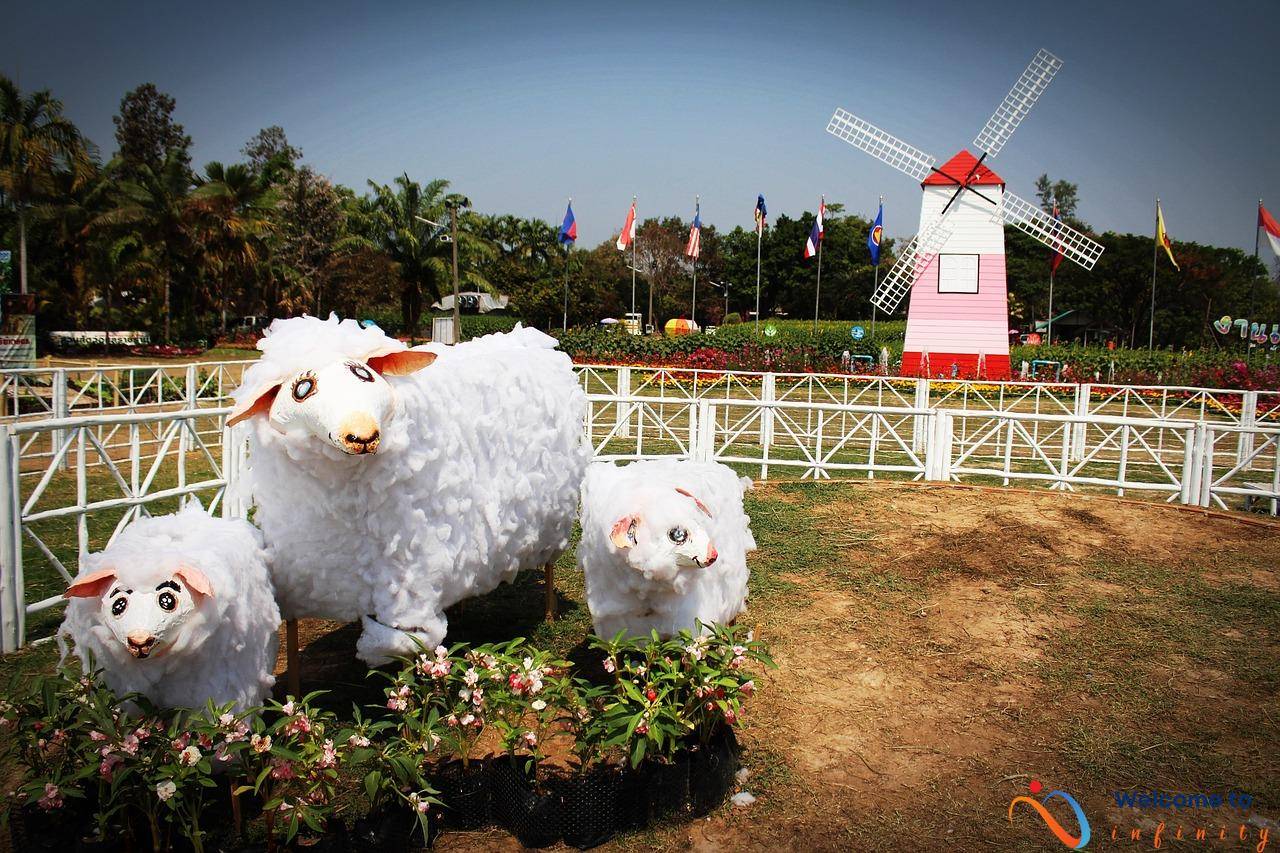Cultural transformation is a continuous process that shapes human behavior, thoughts, and interactions with each other. This transformation is driven by both internal and external factors that affect society. External factors include migration, urbanization, and globalization, while internal factors include cultural ideology, politics, and religion. All these factors contribute to the evolution and adaptation of cultures, resulting in vast changes in societal norms, attitudes, and worldviews.
This article aims to explore the various ways through which cultures evolve and adapt and their potential impact on society and individuals. Cultural adaptation has been a significant phenomenon since ancient times, where people believed that adapting to new cultural practices resulted in the betterment of their community. Today, cultural adaptation remains a critical process in a rapidly changing world, and it affects all aspects of an individual's life, from identity formation to social norms and moral values.
The impact of cultural transformation on society is enormous and has led to the creation of hybrid cultures and unique cultural practices. For instance, the globalization of the economy has brought about the mixing of cultures, leading to the encoding of new practices and norms. In some cases, cultural adaptation has resulted in the loss of cultural identity, where individuals have to leave their cultural background and embrace new ones to survive.
This article will, therefore, focus on providing an in-depth analysis of the factors driving cultural transformation, the different perspectives and theories related to cultural evolution, and the consequences of adaptation on both society and individuals. In conclusion, cultural transformation is an essential element that affects the growth and development of societies. As such, it requires a balance between cultural preservation and adaptation to achieve a sustainable future for all cultures.
The Nature of Cultural Evolution
Cultural evolution is not a static phenomenon; it is a continuous process that results in changes in the way people perceive and respond to the world. Cultural evolution is driven by many factors that shape how humans think, behave, and interact with each other. These factors include technology, globalization, migration, and urbanization.
One of the most powerful driving forces of cultural evolution is technology. Technological advancements have always played a crucial role in shaping cultures and human societies. With technology, individuals can communicate, travel, and access information quickly and easily. As a result, technology has enabled cultural exchange, allowing people to learn from each other and adapt to new ideas and beliefs.
Globalization is another critical factor that shapes cultural evolution. As the world becomes more interconnected, people are exposed to different cultures, which can lead to changes in their own cultural practices. For example, westernization has had a significant impact on traditional cultures, resulting in cultural hybridity and new forms of cultural expression.
Migration and urbanization are also significant drivers of cultural evolution. As people move from one place to another, they bring with them their cultural practices, which can affect the cultural practices of their new community. Urbanization, on the other hand, can lead to changes in cultural values and norms, resulting in cultural adaptation.
Cultural adaptation is a natural response to cultural evolution. It allows individuals and societies to adjust and respond to changes in their environment. Cultural adaptation can lead to the creation of new cultural practices and expressions that promote diversity and inclusivity while preserving cultural heritage.
In conclusion, cultural evolution is an ongoing process that shapes human societies and cultures. This process is driven by various internal and external factors, including technology, globalization, migration, and urbanization. Cultural adaptation is a natural response to cultural evolution, promoting diversity, inclusivity, and the preservation of cultural heritage.
Factors Driving Cultural Transformation
Cultural transformation is a complex process that is shaped by various internal and external factors. These factors impact the way society thinks, behaves, and interacts with one another. Understanding these drivers is crucial in analyzing cultural evolution. Here are the primary factors that drive cultural transformation:
- Technology: Technology has revolutionized many aspects of human life, including communication, transportation, and education. The impact of technology on culture cannot be ignored, and advances in technology often lead to cultural adaptation.
- Globalization: With the rise of globalization, the world has become more interconnected. It has resulted in cultural exchange and the spread of ideas, leading to cultural hybridity.
- Migration: Migration has been a significant driver of cultural transformation throughout human history. The movement of people from one region to another often leads to cultural exchange and adaptation.
- Urbanization: Urbanization is the process of people moving from rural areas to urban centers. It has significant implications for cultural transformation, as it leads to changes in lifestyle, social norms, and beliefs.
The impact of these factors on cultural evolution is profound. They shape the way we see the world and how we interact with others. It is vital to understand the impact of these drivers and how they shape cultural transformation.
The Role of Technology in Cultural Evolution
The development of technology has revolutionized every aspect of human life, including cultures. The way we communicate, work, and carry out daily activities has been impacted by technological advancements. Technology has changed our behavior, language, and perception of the world, and cultures have had to adapt to these changes.
One of the primary ways technology has influenced cultural evolution is through the internet. The internet has made the world a smaller place, enabling people from different parts of the world to communicate and interact through a virtual platform. The emergence of social media platforms has further increased this interaction, leading to the mingling of different cultural practices and values.
Moreover, technological advancements have led to the development of new forms of art, music, and literature. For example, hip-hop music, which originated in African American communities in the United States, has become a global phenomenon, influencing cultures worldwide. Similarly, digital art and photography have emerged due to advancements in technology, leading to the creation of new forms of artistic expression.
Technology has also led to significant changes in the workplace, with the introduction of automation, artificial intelligence, and other digital tools. These changes have required people to adapt to new attitudes towards work and communication, leading to a cultural shift in the workplace environment.
- Overall, technology has played a crucial role in cultural evolution, driving changes in language, communication, and identity.
- The internet has made the world a smaller place, leading to the mingling of cultures and ideas.
- Advancements in technology have led to the creation of new forms of art and music.
- Changes in the workplace, including automation and artificial intelligence, require cultural adaptation.
As technology continues to evolve, it is expected that there will be further cultural change and adaptation. Cultures will continue to evolve as they interact with different ideas, technologies, and practices.
Globalization and Cultural Change
Globalization is a phenomenon that has had a significant impact on cultural transformation. With the increasing movement of people, goods, and ideas across borders, cultures are exposed to new beliefs, values and practices that challenge their traditional ways of life.
One of the most significant impacts of globalization on cultures is the emergence of cultural hybridity. Cultural hybridity refers to the blending of different cultural traditions to create a new, unique culture. This phenomenon is particularly evident in urban areas, where diverse cultures interact and intermingle.
The effects of globalization on cultural change are not uniform across cultures. While some cultures may embrace globalization and adopt foreign practices, others may feel threatened by it and resist change. This has led to a debate on the merits and drawbacks of globalization on cultural heritage.
Proponents of globalization argue that exposure to other cultures can lead to the appreciation and understanding of diversity, while opponents argue that globalization can cause the erosion of cultural heritage and the homogenization of different traditions. The truth lies somewhere in between.
Globalization has undoubtedly had a significant impact on cultural transformation, but its effects are not always negative. With the right approach, globalization can lead to cultural exchange, promote understanding, and inspire innovation.
The Impact of Cultural Adaptation
Cultural adaptation is a crucial aspect of cultural transformation that affects both individuals and societies. One of the effects of cultural adaptation is on identity. When individuals move to a new cultural environment, they are forced to adapt to new customs, traditions, and social norms. This process often leads to the creation of a new cultural identity that incorporates elements from both the old and new cultures.
Another impact of cultural adaptation is on social norms. As individuals adapt to a new culture, they may have to learn and adjust to new social norms. In some cases, they may need to abandon old social norms and adopt new ones that are more acceptable in the new cultural environment. For example, in some cultures, it is acceptable to eat with your hands, while in others, it is considered unhygienic and rude. In such a case, individuals may need to adjust their eating habits to fit in with the new culture.
Cultural adaptation also has an impact on cultural heritage. Migration and globalization have led to the spread of different cultures around the world. As a result, many cultures are at risk of losing their unique traditions and cultural heritage. However, cultural adaptation can also lead to the preservation and revival of cultural heritage. For example, many Indigenous communities around the world are adapting to modern society while still preserving their cultural heritage and practices.
In conclusion, the impact of cultural adaptation is far-reaching and affects both individuals and society. It leads to the formation of new cultural identities, the adjustment of social norms, and the preservation of cultural heritage. As cultures continue to evolve and adapt, it is essential to strike a balance between the preservation of tradition and the encouragement of innovation to ensure that cultural diversity is maintained.
The Dilemma of Cultural Preservation vs. Innovation
Cultural transformation often forces societies to face the dilemma of whether they should maintain their traditions or embrace change. On the one hand, cultural preservation is seen as a way to maintain individual and collective identities, symbolizing stability and continuity. On the other hand, cultural preservation can lead to cultural stagnation, resistance to change, and ultimately, the cultural extinction of society.
Encouraging innovation, therefore, presents an opportunity to explore new ideas, experiment with new practices, and generate creative solutions to societal problems. Innovation allows a culture to evolve, adapt, and remain relevant in a dynamic world. However, innovation can also be viewed as a threat to cultural identity, heritage, and social norms, imposing alien values and practices on the culture.
Balancing cultural preservation and innovation requires careful consideration, negotiation, and compromise. Cultures must find a way to honor and respect their traditions while embracing new and beneficial ideas. This balance can manifest in various ways, such as selective adoption, transformation, and reinterpretation of cultural practices.
Moreover, maintaining an open mind towards change can provide a platform for cultural exchange, leading to new and fascinating cultural combinations. As an analogy, chefs often experiment with multiple flavors and tastes to create unique dishes. In the same way, cultures can experiment creatively with new ideas and practices, and eventually, develop new cultural identities, which blend the old and new.
Therefore, cultures must embrace innovation while preserving traditional practices that signify cultural identity. This balance ensures that a culture stays relevant, dynamic, and meaningful, maintaining its traditions without stagnating. In essence, the dilemma of cultural preservation versus innovation is not about choosing one over the other, but about finding a way to blend the two harmoniously.
Cultural Adaptation and Identity Formation
Adapting to a new culture is not only a challenging but also a transformative experience for individuals. Cultural adaptation involves changes in an individual's behaviors, attitudes, and cultural practices, which shape their identity in a new cultural environment. The process of adaptation may involve making changes in one's assumptions, values, and norms to reflect those of the new culture.
Cultural adaptation can have a significant impact on the formation of identity. In some cases, individuals may experience culture shock, where the new cultural setting challenges their pre-existing beliefs and values. This can lead to confusion, anxiety, and a feeling of not fitting in. However, over time, individuals may develop a hybrid identity that incorporates elements of both their original culture and the new culture they have adapted to.
Furthermore, individuals may find their place in a new cultural environment by identifying with specific cultural groups or communities that share their values and beliefs. These groups can become a source of support, belonging, and identity for those who have undergone cultural adaptation.
Overall, cultural adaptation is a complex and ongoing process that affects an individual's sense of self and belonging. While it can be challenging, it can also lead to personal growth and the development of a unique hybrid identity that incorporates multiple cultural backgrounds.
Critical Review of Cultural Transformation
Cultural transformation is a multifaceted and constantly evolving process influenced by various factors. This section provides a critical review of cultural transformation and delves into the different perspectives and theories that attempt to explain cultural evolution.
The evolutionary approach to cultural transformation views cultures as evolving organisms that adapt to changing environments through a process of natural selection. In contrast, the cultural relativism approach asserts that cultures cannot be judged by a universal standard and that each culture is unique and valid in its own right.
The cultural determinism perspective posits that culture defines human behavior and that individuals are shaped by their cultural environment. On the other hand, the agency perspective emphasizes individual agency and the ability to shape culture through deliberate actions and decisions.
The cultural hybridity theory suggests that cultures are not static and pure entities, but rather, they constantly interact, mix, and transform. This perspective highlights the fluidity of cultural boundaries and the emergence of new cultural forms through cultural exchange and adaptation.
Overall, cultural transformation is a complex and dynamic process that defies simplistic explanations or generalizations. Understanding cultural evolution requires an interdisciplinary and nuanced approach that takes into account various perspectives and theories.









